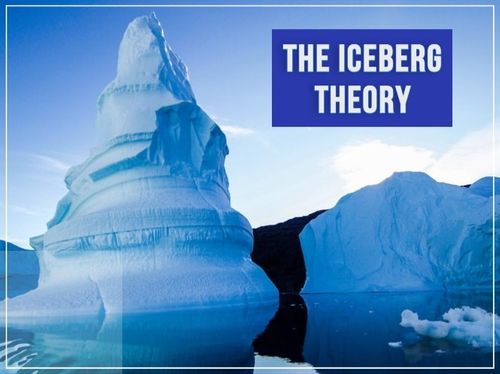Hemingway's 'iceberg' theory – and how to use it in your writing
Sep 03, 2021 · 2 mins read
0
Share

What made Ernest Hemingway one of the most celebrated writers in history? His use of language was clear, concise, and yet profoundly evocative. Much of that ability stems from a technique known as the 'iceberg theory’ of writing.
Save
Share
Only one-eighth of an iceberg is visible above water. The rest of its mass lies hidden from view, beneath the surface. Hemingway viewed his stories the same way. By presenting only a fraction of what’s happening, the reader is empowered to fill in the blanks for themselves.
Save
Share
This is not a license to be vague or lazy. If anything, it requires more effort to convince the reader that a wider world exists beyond any given scene. When done correctly, it makes the story stronger and more immersive. But as popular as this technique is, it’s rarely mastered.
Save
Share
“If you leave out important things or events that you know about, the story is strengthened. If you leave or skip something because you do not know it, the story will be worthless.” – Ernest Hemingway
Save
Share
At 18, Hemingway did an apprenticeship with the Kansas City Star, covering crime and obituaries. This taught him to distil background material into concise facts. “You were forced to learn to write a simple declarative sentence,” he wrote later. “This is useful to anyone.”
Save
Share
In a movie, emotion can be communicated without description (e.g. through sound, action, and body language). In writing, that’s not so easy. But by being deliberately sparse, Hemingway let subtext (the chunk of iceberg under water) do the talking.
Save
Share
“If the writer is writing truly enough, [the reader] will have a feeling of those [omitted] things as strongly as though the writer had stated them.” – Ernest Hemingway
Save
Share
On the surface, Hemingway’s short story Hills Like White Elephants is a conversation between two lovers waiting for a train. Although the words ‘pregnant’ or ‘abortion’ are never mentioned, the discussion around the relationship's future becomes immersive because of this omission
Save
Share
Legend has it that Hemingway won a bet by crafting a story in just six words: “For sale: baby shoes, never worn.” True or not, it illustrates the iceberg theory perfectly. The story isn’t contained in those six words. It unfolds in the possibilities your imagination reaches for.
Save
Share
Bottom line: Hemingway did not believe in spoon-feeding readers with descriptive information. When you use concise language to convey illustrative action, the subtext created by what remains unsaid leads to more meaning. Like an iceberg, the strongest part lies out of sight.
Save
Share
0




